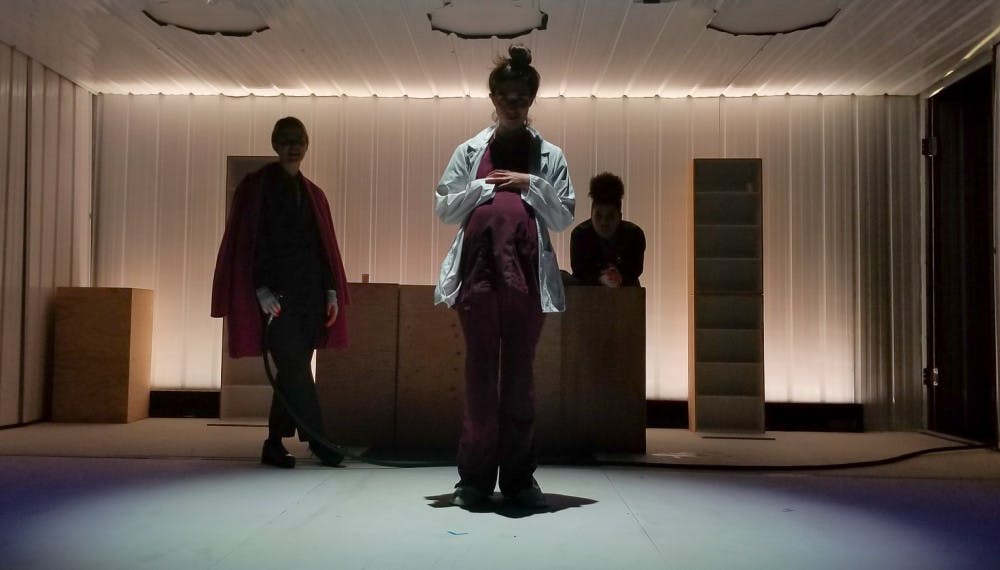This past weekend, Sock & Buskin produced the play “Dry Swallow,” a gritty interrogation of the relationship between drugs, class, violence and art.
The play, written by Lucas Baisch MFA ’20 and directed by Brooklyn-based Bengali director Shayok Misha Chowdhury, takes place in three separate worlds.
Pal, a young man — Marcel Mascaró MFA ’18 — and Chula, an old woman — Magnolia Pérez — sell drugs on a street corner in East Los Angeles. Sik, a CVS security guard — Sammie Scott ’21 — and Dori, her pregnant girlfriend — Siena Rafter ’21 — nip prescriptions from the pharmacy to sell for extra cash. Nasir — Aaron Alper ’23 — and Porter — Clare Boyle ’20 — both young art-types from wealthy backgrounds, bicker over Nasir’s latest conceptual project: ingesting a drug that will end — then restore — his life.
The pairs of characters in “Dry Swallow” are geographically isolated, yet Baisch nudges us to understand that the drugs passing through their hands create a sort of symbiosis among them; they are all part of the same broken system.
While sitting on his street corner, peddling his drugs, Pal professes:
“Shit, I’m alleviating pain.
I’m on that Robin Hood shit,
Yo, I’m fighting the megalo-empirical-man.”
To which Chula replies,
“They’ll never see you as anything more than what you is.”
And indeed, here is the tragedy revealed in the play: The system — ambiguous, omnipresent — deals the cards. Drugs may flow laterally and longitudinally across the country, from street corners to rural pharmacies to ritzy galleries, promising health, wealth and euphoria, but the fates of individuals are predetermined. The poor will pay the system’s cost with their bodies and their freedom, while the rich waltz past unscathed.
The play hits a climax near the very end. Nasir and Porter stand in front of a gallery audience, toasting the smashing success of Nasir’s latest exhibit. Behind them, in an illuminated shipping container, we see Pal, gagged and bound to a cinder block.
Earlier in the show, Nasir righteously proclaimed that pharmaceutical companies “contribute to these systems of oppression — these illegal pipelines being created for distribution — and those on the ground, the people actually handling the product, they’re the ones suffering the consequences.” But although Nasir might rage against this “cycle,” the juxtaposition of Pal’s pitiful silhouette in the background with the champagne and applause in the gallery makes it clear that his art contains a deep injustice, if not its own sort of violence.
Although decidedly serious in tone, the show is remarkably funny at points. The audience collectively bent in two as Shitstain — Charlie Stewart ’20 — strutted onto the stage, sporting red converse and a prep school blazer, demanding to know whether Pal had a chip reader through which to purchase his Xanax. Scott and Rafter also provide us with some lighter moments; their portrayal of young parenthood is touching and sincere.
Perhaps the most striking element of the production is Baisch’s prose itself. His characters, in their frequent monologues, do not so much speak as spew, hurling effervescent bits of language to the audience at a giddying rate. This effusion, when directed toward the audience, has the effect of making us feel implicated in the whole mess playing out on stage — which, of course, we are.





